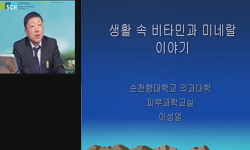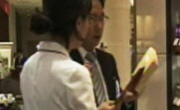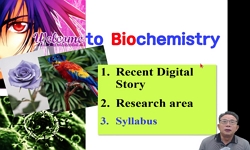This study on the physicochemical property of physiological activity substance in mung bean (Phaseolus aureus L.) was performed for the use as an functional food materialization. The proximate composition in the vacuum freeze dried mung bean was carbo...
http://chineseinput.net/에서 pinyin(병음)방식으로 중국어를 변환할 수 있습니다.
변환된 중국어를 복사하여 사용하시면 됩니다.
- 中文 을 입력하시려면 zhongwen을 입력하시고 space를누르시면됩니다.
- 北京 을 입력하시려면 beijing을 입력하시고 space를 누르시면 됩니다.

기능성 소재로서 녹두(Phaseolus aureus L.)의 이화학적 특성 = Physicochemical Properties of the Mung Bean (Phaseolus aureus L.) as Biohealth Functional Substance
한글로보기https://www.riss.kr/link?id=A106508291
- 저자
- 발행기관
- 학술지명
- 권호사항
-
발행연도
2019
-
작성언어
Korean
-
주제어
녹두 ; 비타민 ; 무기질 ; 지방산 ; 아미노산 ; Mung bean (Phaseolus aureus L.) ; Vitamin ; Mineral ; Fatty acid ; Amino acid
-
등재정보
KCI등재
-
자료형태
학술저널
-
수록면
1096-1107(12쪽)
-
KCI 피인용횟수
3
- DOI식별코드
- 제공처
-
0
상세조회 -
0
다운로드
부가정보
다국어 초록 (Multilingual Abstract)
This study on the physicochemical property of physiological activity substance in mung bean (Phaseolus aureus L.) was performed for the use as an functional food materialization. The proximate composition in the vacuum freeze dried mung bean was carbohydrate 57.20±0.29%, crude protein 26.40±0.69%, moisture 9.90±0.16%, crude ash 3.54±0.43%, and crude fat 2.96±0.26%, respectively. The vitamin content of mung bean was vitamin B 5 0.62±0.013 mg/100 g, vitamin E 0.17±0.001 mg/100 g, vitamin B 1 0.13±0.016 mg/100 g, and β-carotene 87.37±0.754 μg RE/100 g, respectively. The mineral content of mung bean was potassium (K) 12,428.55±147.55 mg kg -1 , magnesium (Mg) 2,053.32±14.13 mg kg -1 , calcium (Ca) 1,966.40±14.53 mg kg -1 , sodium (Na) 1,063.99±7.75 mg kg -1 , iron (Fe) 63.77±0.98 mg kg -1 , and manganese (Mn) 14.67±0.22 mg kg -1 . The compositions of fatty acid were saturated fatty acid 29.23±0.03%, monoenes 20.30±0.04%, and polyenes 50.46±0.06%. Protein bound amino acid content of mung bean was 21.75±0.24 g%. And major amino acids were glutamic acid 3.93±0.03 g%, aspartic acid 2.68±0.03 g%, respectively. The composition of free amino acid of mung bean was 336.77±8.66 mg%, and major free amino acids were arginine, glutamic acid, asparagine, and aspartic acid. As a results of these experiment, Mung bean could be used a natural resouce and functional biohealth food substance.
참고문헌 (Reference)
1 오혜숙, "팥과 녹두의 이소플라빈 함량과 항산화 및 혈전용해 활성" 한국식품조리과학회 19 (19): 263-270, 2003
2 오다영, "진도산 울금(Curcuma longa L.)의 이화학적 특성" 한국환경과학회 28 (28): 403-412, 2019
3 김동관, "재배방식에 따른 녹두 종실과 나물의 품질변화" 한국작물학회 56 (56): 212-218, 2011
4 오다영, "울금(Curcuma longa L.) 추출물의 산화억제및 질소산화물 소거활성" 한국응용과학기술학회 36 (36): 13-22, 2019
5 김한수, "야생 돌복숭아 씨와 과육의 아미노산 및 지방산 조성에 관한 연구" 한국생명과학회 17 (17): 125-131, 2007
6 김동관, "생력재배에 적합한 녹두 품종의 특성" 한국작물학회 55 (55): 239-244, 2010
7 김윤태, "로스팅 온도에 따른 녹두의 항산화 활성 변화 및 일반 성분 분석" 동아시아식생활학회 24 (24): 217-223, 2014
8 정용진, "녹두의 가수분해조건에 따른 특성 변화" 한국식품저장유통학회 13 (13): 563-568, 2006
9 위해리, "녹두의 Vitexin이 비만전구세포에서 세포분화 및 아디포사이토카인 분비능에 미치는 영향" 한국식품영양과학회 41 (41): 1079-1085, 2012
10 김옥미, "녹두분말의 가수분해 조건에 따른 특성 비교" 한국식품저장유통학회 14 (14): 301-307, 2007
1 오혜숙, "팥과 녹두의 이소플라빈 함량과 항산화 및 혈전용해 활성" 한국식품조리과학회 19 (19): 263-270, 2003
2 오다영, "진도산 울금(Curcuma longa L.)의 이화학적 특성" 한국환경과학회 28 (28): 403-412, 2019
3 김동관, "재배방식에 따른 녹두 종실과 나물의 품질변화" 한국작물학회 56 (56): 212-218, 2011
4 오다영, "울금(Curcuma longa L.) 추출물의 산화억제및 질소산화물 소거활성" 한국응용과학기술학회 36 (36): 13-22, 2019
5 김한수, "야생 돌복숭아 씨와 과육의 아미노산 및 지방산 조성에 관한 연구" 한국생명과학회 17 (17): 125-131, 2007
6 김동관, "생력재배에 적합한 녹두 품종의 특성" 한국작물학회 55 (55): 239-244, 2010
7 김윤태, "로스팅 온도에 따른 녹두의 항산화 활성 변화 및 일반 성분 분석" 동아시아식생활학회 24 (24): 217-223, 2014
8 정용진, "녹두의 가수분해조건에 따른 특성 변화" 한국식품저장유통학회 13 (13): 563-568, 2006
9 위해리, "녹두의 Vitexin이 비만전구세포에서 세포분화 및 아디포사이토카인 분비능에 미치는 영향" 한국식품영양과학회 41 (41): 1079-1085, 2012
10 김옥미, "녹두분말의 가수분해 조건에 따른 특성 비교" 한국식품저장유통학회 14 (14): 301-307, 2007
11 김동관, "녹두 파종기에 따른 수량과 Flavonoid 함량 변화" 한국작물학회 53 (53): 273-278, 2008
12 김동관, "녹두 식물체 부위별 Flavonoids 함량 변화" 한국작물학회 53 (53): 279-284, 2008
13 임지영, "녹두 및 대두추출물의 항암 및 항염증 활성" 한국식품과학회 42 (42): 755-761, 2010
14 김한수, "남극해 크릴 새우의 지방산조성과 무기질 및 비타민함량" 한국환경과학회 23 (23): 47-52, 2014
15 진용익, "고랭지 지역에서 재배한 녹두 품종들의 항산화 활성 및 아미노산 조성 비교" 한국환경농학회 29 (29): 381-387, 2010
16 S. Jung, "The long-term relationship between dietary pantothenic acid (vitamin B5) intake and C-reactive preotein concentration in adults aged 40 years and older" 27 (27): 806-816, 2017
17 Y. H. Kang, "Studies on the physiological functionality of pine needle and mugwort extract" 27 (27): 978-984, 1995
18 V. Pandhair, "Reactive oxygen species and antioxidant in plants:an overview" 15 (15): 71-78, 2006
19 조영제, "Portulaca oleracea의 생리활성과 항균활성" 한국응용생명화학회 51 (51): 49-54, 2008
20 AOAC, "Official methods of analysis"
21 KFDA, "Korea food and drug association, Ministry of food and drug safety"
22 J. A. Hoeck, "Influence of genotype and environment on isoflavone contents of soybean" 40 (40): 48-51, 2000
23 J. C. Song, "Food material science" Kyomoon Publishing Co. 248-249, 1994
24 C. Tsukamoto, "Factors affecting isoflavone content in soybean seeds: changes in isoflavones, saponins, and composition of fatty acids at different temperatures during seed development" 43 (43): 1184-1192, 1995
25 R. B. Wolf, "Effect of temperature on soybean seed constituents: oil, protein, moisture, fatty acids, amino acids" 59 (59): 230-232, 1982
26 김다솜, "Comparison of the retention rates of thiamin, riboflavin, and niacin between normal and high-oleic peanuts after roasting" 한국응용생명화학회 61 (61): 449-458, 2018
27 A. K. Kim, "Comparison of chemecal composition and gelatinization property of mungbean flour and starch" 11 (11): 472-478, 1995
28 M. J. Noh, "Comparative effects of gamma irradiation and methyl bromide fumigation on disinfestation and physicochemical properties of mung bean" 30 (30): 444-449, 2001
29 F. Lai, "Antioxidant activities of water-soluble polysaccharide extracted from mung bean (Vigna radiata L.) hull with ultrasonic assisted treatment" 81 (81): 323-329, 2010
30 M. Nematy, "A review on nutrition and skin aging" 18 (18): 20-24, 2015
31 E. G. Bligh, "A rapid method of total lipid extraction and purification" 37 (37): 911-917, 1959
동일학술지(권/호) 다른 논문
-
- 한국응용과학기술학회
- 김의재
- 2019
- KCI등재
-
용매 환경에서의 폴리아미드 고분자 재료의 자체확산과 유변학적인 특성
- 한국응용과학기술학회
- 김남정
- 2019
- KCI등재
-
전고체형 에너지 저장 매체 제조를 위한 이온성 액체 기반의 고체 전해질과 탄소나노복합체 기반의 전극소재 개발
- 한국응용과학기술학회
- 김용렬
- 2019
- KCI등재
-
홍삼추출물이 LPS로 유도된 RAW 264.7 cell의 염증반응에 미치는 효과
- 한국응용과학기술학회
- 장영아
- 2019
- KCI등재
분석정보
인용정보 인용지수 설명보기
학술지 이력
| 연월일 | 이력구분 | 이력상세 | 등재구분 |
|---|---|---|---|
| 2022 | 평가예정 | 계속평가 신청대상 (계속평가) | |
| 2021-12-01 | 평가 | 등재후보로 하락 (재인증) |  |
| 2019-01-29 | 학회명변경 | 한글명 : 한국유화학회 -> 한국응용과학기술학회영문명 : The Korean Oil Chemists' Society -> The Korean Society of Applied Science and Technology (KSAST) |  |
| 2019-01-01 | 학술지명변경 | 한글명 : 오일 및 응용과학 학회지 -> 한국응용과학기술학회지외국어명 : Journal of Oil & Applied Science -> Journal of the Korean Applied Science and Technology |  |
| 2019-01-01 | 학술지명변경 | 한글명 : 오일 및 응용과학 학회지 -> 한국응용과학기술학회지외국어명 : Journal of Oil & Applied Science -> Journal of the Korean Applied Science and Technology |  |
| 2018-01-01 | 평가 | 등재학술지 유지 (등재유지) |  |
| 2017-06-01 | 학술지명변경 | 한글명 : 韓國油化學會誌 -> 오일 및 응용과학 학회지외국어명 : Journal of The Korean Oil Chemists' Society -> Journal of Oil & Applied Science |  |
| 2015-01-01 | 평가 | 등재학술지 유지 (등재유지) |  |
| 2011-01-01 | 평가 | 등재학술지 유지 (등재유지) |  |
| 2009-01-01 | 평가 | 등재학술지 유지 (등재유지) |  |
| 2006-01-01 | 평가 | 등재학술지 선정 (등재후보2차) |  |
| 2005-01-01 | 평가 | 등재후보 1차 PASS (등재후보1차) |  |
| 2004-01-01 | 평가 | 등재후보학술지 유지 (등재후보1차) |  |
| 2002-07-01 | 평가 | 등재후보학술지 선정 (신규평가) |  |
학술지 인용정보
| 기준연도 | WOS-KCI 통합IF(2년) | KCIF(2년) | KCIF(3년) |
|---|---|---|---|
| 2016 | 0.3 | 0.3 | 0.3 |
| KCIF(4년) | KCIF(5년) | 중심성지수(3년) | 즉시성지수 |
| 0.27 | 0.24 | 0.354 | 0.08 |




 ScienceON
ScienceON 스콜라
스콜라






